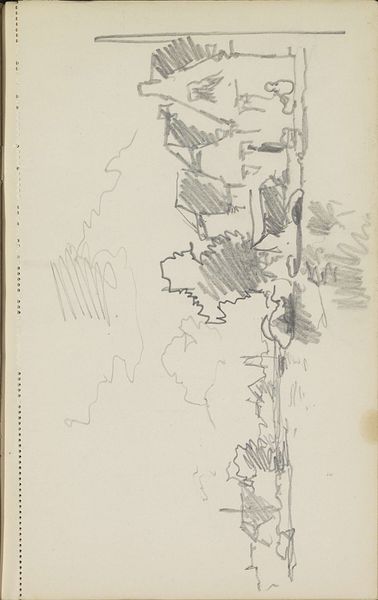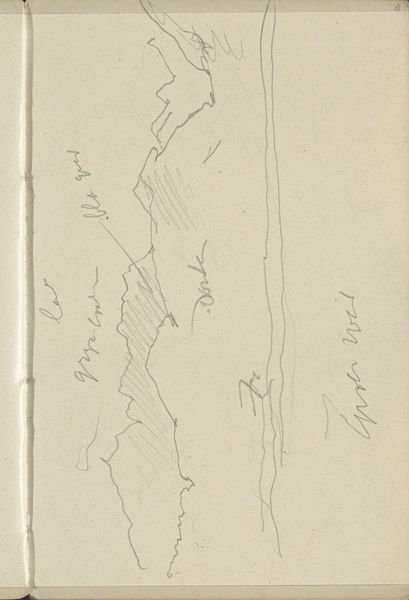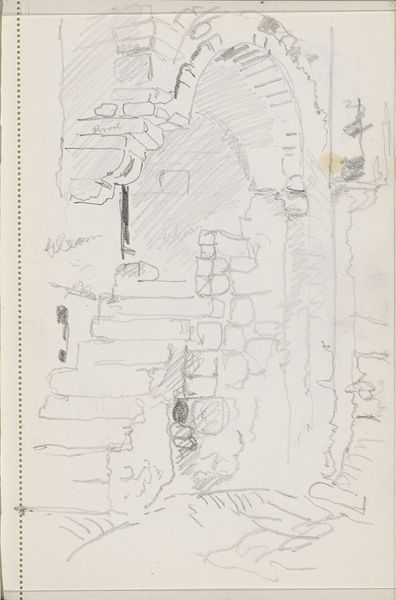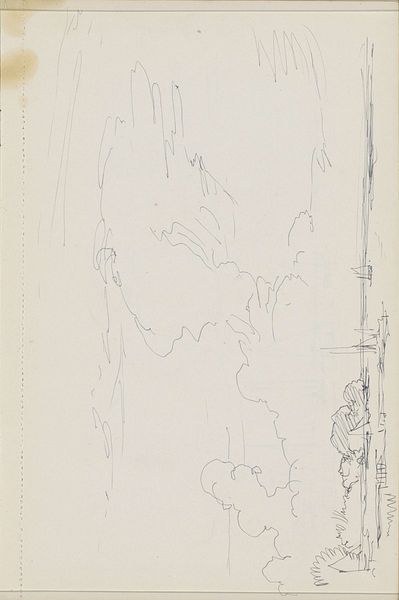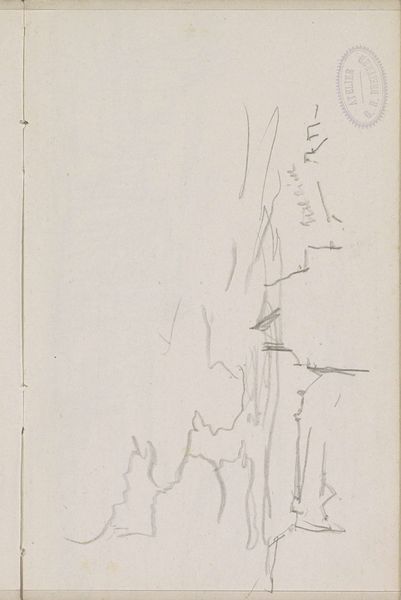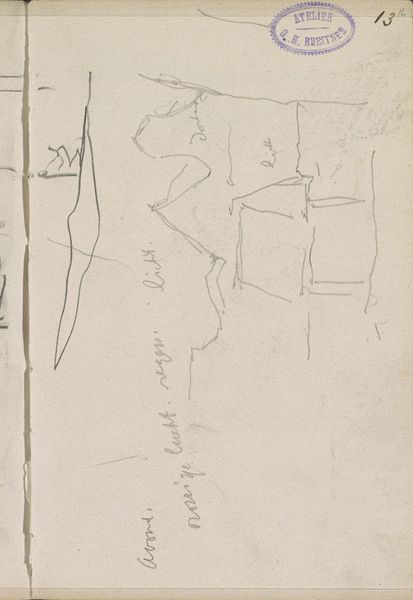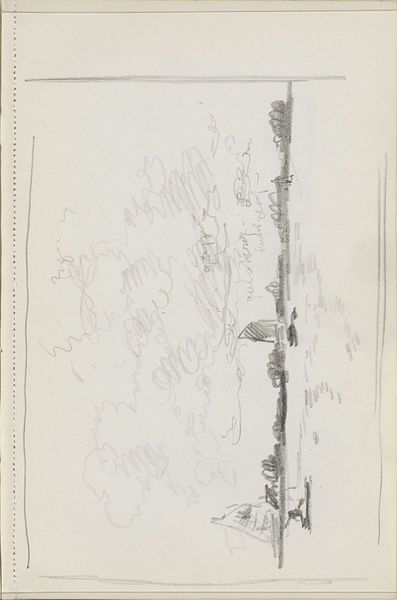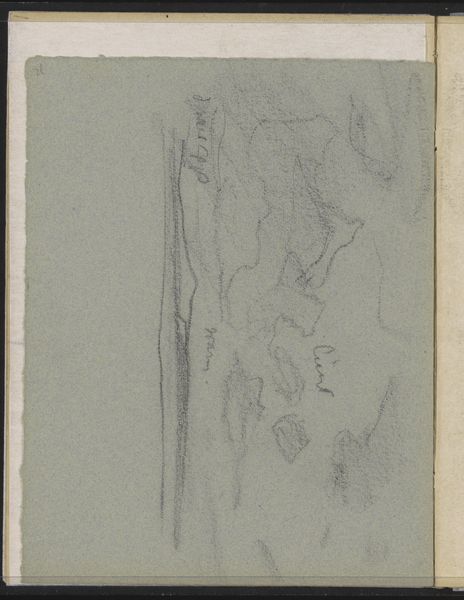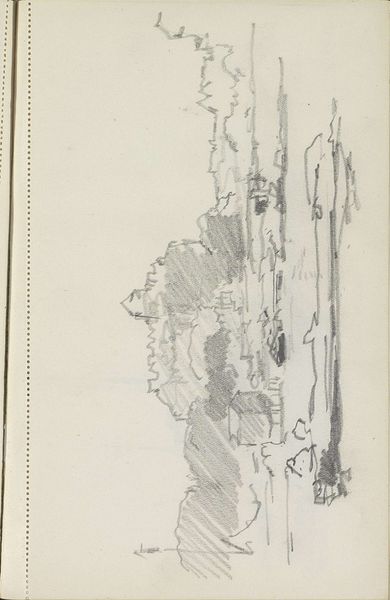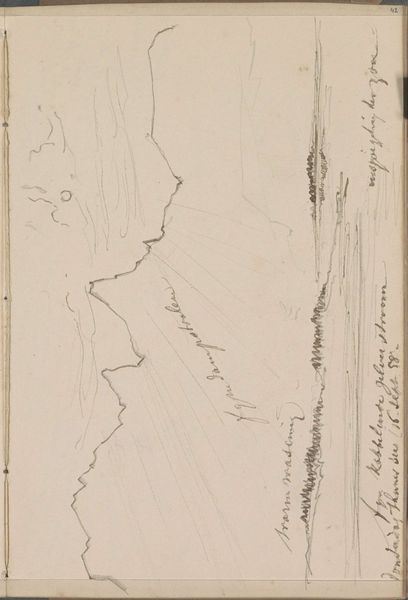
Copyright: Rijks Museum: Open Domain
Editor: Here we have Cornelis Vreedenburgh’s "Landschap met bomen," or "Landscape with Trees," dating from 1890 to 1946, created with pencil and pen. There's something very fleeting about it; a captured moment. How do you interpret this work? Curator: What strikes me is how Vreedenburgh uses the landscape tradition to explore notions of ephemerality. Considering its creation during a period marked by rapid industrialization and social upheaval, doesn’t this work almost operate as a form of resistance? Editor: Resistance? In what way? Curator: Think about it: prioritizing the transient beauty of nature, emphasizing the importance of preservation. It challenges the relentless march of progress that often disregards environmental consequences and indigenous connections to the land. What about you; what's your immediate impression? Editor: It feels…incomplete. Like a preparatory sketch for a larger piece. Curator: Exactly! The unfinished nature underscores this temporality and fragility. It invites us to contemplate our role as stewards of the environment and question power structures that exploit natural resources. The deliberate choice to capture this vulnerability highlights environmental vulnerability in our present day. Editor: I see what you mean! The seemingly simple drawing prompts us to rethink our relationship with nature. Curator: Precisely. By focusing on the beauty of trees and landscape, the artist almost implicitly advocates for its preservation. This perspective transforms this modest landscape sketch into a potent reminder of what is at stake when we overlook the environment. Editor: I definitely gained a new appreciation for what seemed at first like just a quick sketch!
Comments
No comments
Be the first to comment and join the conversation on the ultimate creative platform.
